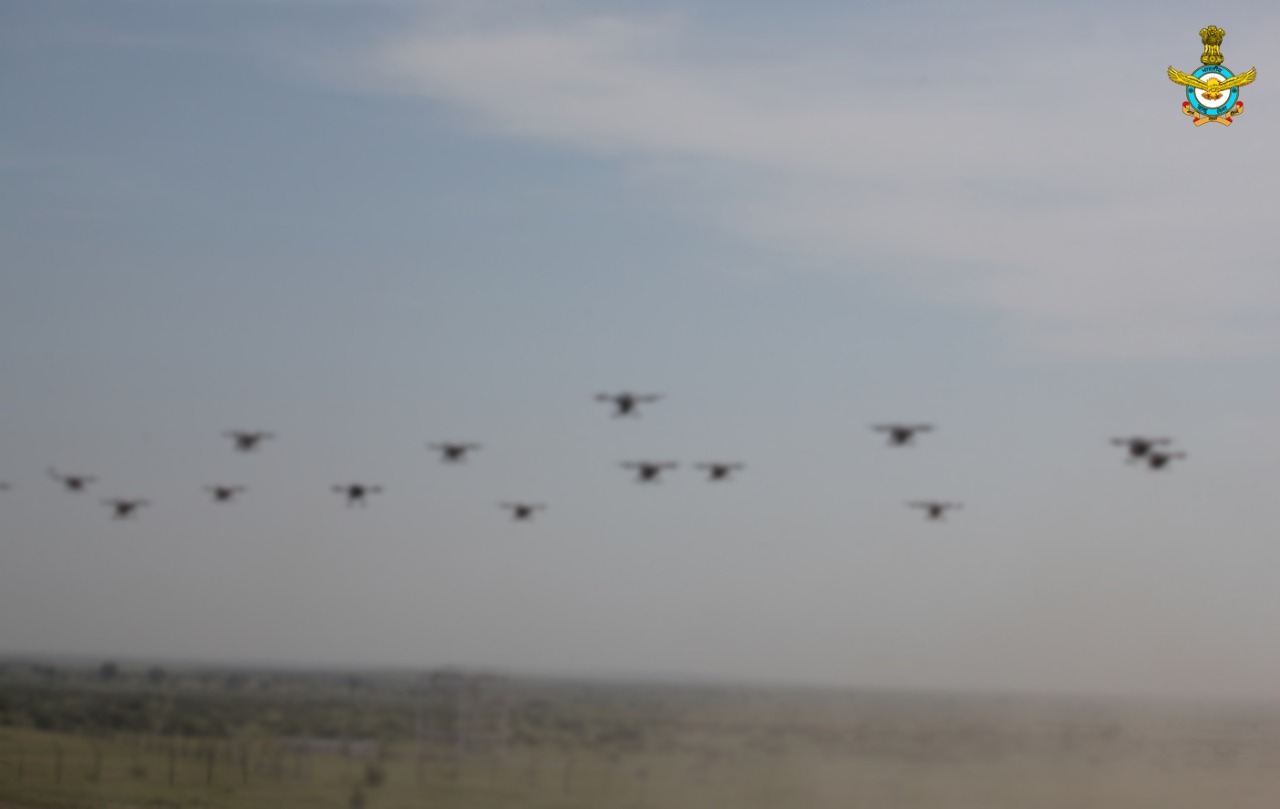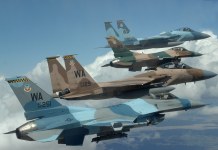In a recent tweet, the Indian Air Force has released images of its own swarm drone tests after news came out that India is accelerating its drone project. These images, according to experts, are a signal to adversaries across the country’s northern borders, which already possess such capability.
#Innovation #Integration #Intimidation
Harnessing indigenous talent and technological capability, IAF is leading the way in using Artificial Intelligence to add to its combat potential. Swarm drones is a prime example. #IndianAirForce#HarKaamDeshKeNaam pic.twitter.com/gZV8lKK4yS— Indian Air Force (@IAF_MCC) December 5, 2020
“Harnessing indigenous talent and technological capability, IAF is leading the way in using Artificial Intelligence to add to its combat potential. Swarm drones is a prime example,” the tweet mentioned, pointing towards the use of Artificial Intelligence technology with these drones.

Three images of the tests were also posted, showing a number of hexacopter UAVs (at least 15 of them) flying in a coordinated manner from an airbase. The images are, however, blurred. Whether the blurring is done intentionally or unintentionally is not known, but experts have stated that this could be to hide the characteristics and the manufacturing company of these drones.
Why Swarm Drones?
Swarm drones is a concept where a large cluster (or many clusters) of unmanned aerial vehicles (UAVs) are flown together in contested or hostile airspace, in order to confuse the radar with a much bigger image of the actual target and achieve their assigned objective.
These drones (or robots) work in tandem with each other and are controlled either manually or autonomously by using processors on board.
These could be efficiently used in Suppression of Enemy Air Defenses/ Destruction of Enemy Air Defenses (SEAD/DEAD) roles, by giving a distorted image of bogeys on the radar, detecting the enemy radar sites and relaying that information to their operators.
If these drones are armed, these can also be used as kamikaze or strike roles, hitting the enemy Air Defense sites or other critical infrastructural assets. These can be used in many other areas as well, and their operational capabilities and scope are still being developed with innovative ideas.
Apart from military applications, its civilian usage is also being done in many ways like aerial demonstrations. This technology has been on a rapid rise in China, the biggest manufacturer and the user of military and non-military UAVs. They are even used as fireworks and other entertainment purposes among the Chinese population.
China has already made rapid advancements in the deployment of its military drone swarms. This year only, the country released a video of a ‘barrage swarm’ truck-mounted system tested for its military and is the first practical use of such system on this scale anywhere in the world.




